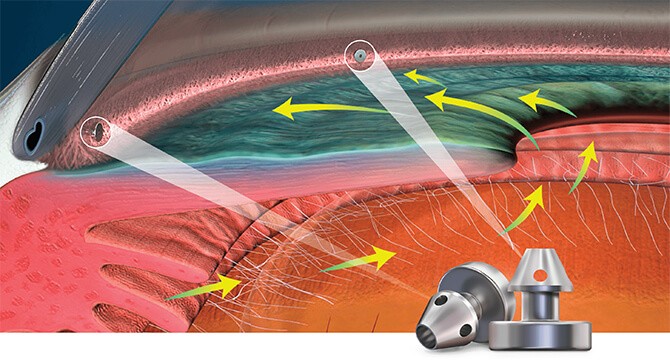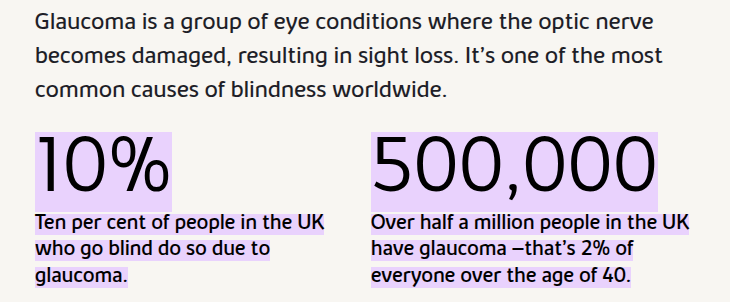C L E A R L Y

Glaucoma Management
Glaucoma Management & Treatment: Early Detection & Advanced Treatments
Glaucoma is one of the leading causes of irreversible blindness; however, with early detection and appropriate management, most patients can preserve their sight and quality of life. Over half a million people in the UK have glaucoma, a number predicted to increase with an aging population. Ten percent of people in the UK who go blind do so due to glaucoma.

Glaucoma is not simply a single disease, but rather a number of conditions that all cause damage to the optic nerve, the connection between the eye and brain. This damage is most frequently associated with raised intraocular pressure (IOP), but it can also develop in cases of normal IOP. Glaucoma usually develops slowly and insidiously with no warning expiration, which is why it is sometimes referred to as the “silent thief of sight.
Causes and risk factors
The primary cause of glaucoma is unknown despite different sources. However, there are several risk factors associated with glaucoma:
1. High Intraocular Pressure
Glaucoma frequently arises when fluid within the eye is not properly drained, leading to a buildup of pressure. As this intraocular pressure rises, it leads to optic nerve damage and, if not treated, vision loss.
2. Family history
Glaucoma has the potential to run in families. If a family member has been diagnosed with glaucoma, your chances of developing the disease are much greater. Your ophthalmologist will likely suggest preventative eye exams, especially for early detection and management.
3. Age (40+)
As you age, your risk of developing glaucoma rises. Those ages 40 and older -especially those ages 60 and over are at greatest risk and should have eye health checks done regularly to protect their vision.
4. Health issues
Current health issues such as diabetes, high blood pressure, or decreased circulation may also increase your risk of developing glaucoma. These health issues can damage delicate structures within the eye, increasing the importance of regular assessments.
5. Long-term prescribed medications
Long-term prescriptions for certain medications, especially steroids, during treatment can increase the eye pressure and make you more prone to developing glaucoma. Patients receiving long-term prescriptions should be monitored for eye pressure regularly.
Recognising Symptoms
In its early stages, glaucoma rarely causes noticeable symptoms. Many patients are unaware they have the disease until significant vision has already been lost. Over time, however, symptoms may include:
• Gradual loss of peripheral (side) vision, often unrecognised until advanced.
• Difficulty adjusting to dim lighting.
• Blurred or patchy vision.
• Seeing haloes around lights, especially at night.
• In rare cases of acute angle-closure glaucoma, sudden eye pain, redness, nausea, and rapid vision loss.
Diagnosis and Care
Including eye pressure assessment, optic nerve imaging, and visual field testing, our clinic uses advanced tools to assist in the diagnosis and monitoring of your glaucoma and provide a complete analysis of your ocular health.
Treatment Options
Though there is no cure for glaucoma at this time, treatments are very effective in slowing the progression of the disease and preserving vision. Potential treatment options depend on diagnosis; our specialists may recommend:
• Topical Medications to lower the pressure inside your eye.
• Laser Treatment to increase the drainage of fluid.
• Surgery, such as minimally invasive glaucoma surgery (MIGS) or surgery, is used for more severe cases.
Living with Glaucoma
Living with glaucoma will be a lifetime commitment, but everyone can have a good quality of life and maintain independence with proper monitoring and individualized care. Our caring team will provide expert treatment along with education, support, and reassurance throughout your journey.
